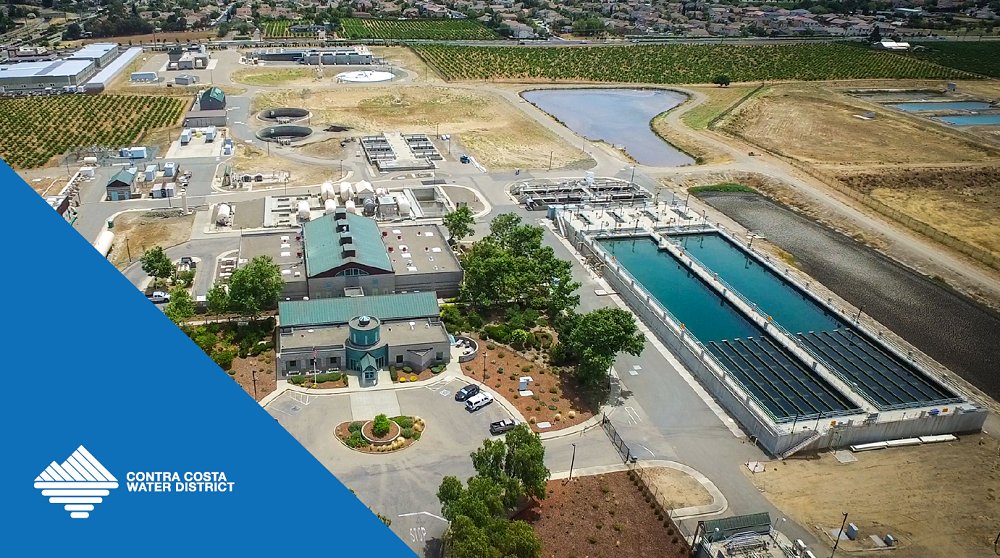Per- and Polyfluoroalkyl Substances (PFAS — pronounced “PEE-Fass”) are a class of synthetic “forever chemicals” that have been linked to cancer, high cholesterol, and even the suppression of vaccine effectiveness in children. They’re present in everything from nonstick pans to fire extinguishers and they accumulate easily in the environment, making them an increasingly big problem for water systems.Some European countries and Maine have banned the chemicals, 29 states have already introduced numerical PFAS limits for water, and more than 100 anti-PFAS bills were passed across the country last year.Although many American water utilities are still figuring out how best to deal with them, there are signs regulators are getting serious about introducing federal rules for PFAS. After years of being accused of inaction, the White House is publicly detailing its anti-PFAS plan.The United States Environmental Protection Agency (EPA) has also used some tough language of late.Administrator Michael Regan recently pledged to “turn the tide” against the chemicals by “harnessing the collective resources and authority across federal, Tribal, state, and local governments to empower meaningful action now.”Recently the EPA announced that 29 of the next 30 pollutants it would look at under its Unregulated Contaminant Monitoring Rule (UCMR) would be PFAS, signaling that the agency was taking concrete steps to regulate the pollutants.
What is the UCMR and how does it work?
The EPA releases a new Unregulated Contaminant Monitoring Rule (UCMR) every five years.The UCMR requires public water systems that serve more than 10,000 people to start sampling for a list of contaminants that they previously could ignore. (The latest list — UCMR 5 — will require systems serving more than 3,300 people to sample, as well as a representative group of 800 smaller systems.)The EPA evaluates candidates for new UCMR lists based on studies that show how harmful they are, how actively they’re being used, and how readily available data is on their frequency of use.The agency says UCMR data is one of the key sources it uses to make regulatory and other risk management decisions.“[UCMR 5] data will ensure science-based decision-making and help prioritize protection of disadvantaged communities,” the EPA says.
What is the EPA’s PFAS strategy?
The agency’s roadmap for dealing with PFAS is centered on a “new three Rs” of sorts: Research, Restrict, and Remediate.The EPA wants to learn more about PFAS, prevent the chemicals from entering the natural environment as much as possible, and hasten the cleanup of PFAS across the country.In a roadmap document that will take the agency to 2024, the EPA lays out a number of other strategies to deal with PFAS that could affect drinking and wastewater utilities.
Spring 2022: Enhance PFAS reporting under the Toxics Release Inventory (TRI)
Some utilities have to report PFAS to the TRI. The EPA says it plans to get rid of 11 exemptions and exclusions for those reporters by labeling PFAS “Chemicals of Special Concern.” This will help the EPA collect more data on the chemicals.
Winter 2022: Finalize new PFAS reporting under TSCA Section 8
By Jan. 1, 2023, there will be a new rule in place regarding data collection about PFAS produced since 2011, including information on uses, production volumes, disposal, exposures and hazards.This will also help the EPA get to know the sources and quantities of PFAS in the U.S. and will be used to develop future regulations.
Fall 2023: Establish a national primary drinking water regulation for two PFAS
The EPA has not yet established national drinking water guidelines for PFAS. It will put forward a proposal to do so this fall, followed by a final rule expected in fall 2023.The agency has proposed regulating two PFAS in drinking water: perfluorooctanoic acid (PFOA) and perfluorooctane sulfonic acid (PFOS).It says more PFAS will be considered this year and in the future.
Winter 2024: Restrict PFAS discharges from industrial sources
The EPA plans to put forward new Effluent Limitations Guidelines (ELGs) to limit how much PFAS industrial utilities, like municipal sewage treatment facilities, can emit.The agency has done a multi-industry study on PFAS discharges, and “plans to make significant progress in its ELG regulatory work by the end of 2024.”Actions to come include:
- Restricting PFAS output in organic chemicals, plastics and synthetic fibers, metal finishing, and electroplating.
- Studying facilities where there’s a bit of data, but not enough to make a new rule — such as electrical and electronic components, textile mills and landfills.
- Studying facilities with not much data — such as leather tanning and finishing, plastics molding and forming, and paint formulating.
- Monitoring industrial categories slated to phase out PFAS by 2024 — such as pulp, paper, paperboard and airports.
Winter 2022 and Fall 2024: Leverage NPDES permitting to reduce PFAS discharges to waterways
The EPA will include new restrictions in its National Pollutant Discharge Elimination System (NPDES) to reduce PFAS discharges at the source. The rules are expected this winter.Utilities and industry will have to
- Eliminate or substitute other chemicals for PFAS
- Use non-PFAS firefighting foams
- Enhance public engagement with downstream communities and public water systems
- Use pretreatment programs to control PFAS at the source
Winter 2022 and Fall 2024: Publish final recommended ambient water quality criteria for PFAS
The EPA sets out recommended water quality criteria for states and tribal governments to use. Soon, those recommendations will include PFAS limits.It will start with PFOA and PFOS, and move to other PFAS later.Criteria for aquatic life are expected in winter 2022, and human health criteria are expected in fall 2024.
Winter 2024: Finalize risk assessment for PFOA and PFOS in biosolids
The EPA may set limits on the amount of PFAS that can be in biosolids (sewage sludge) from wastewater treatment facilities. PFAS can contaminate crops and livestock when used on farms.The agency will complete a risk assessment for PFOA and PFOS by winter 2024, to determine if limits are necessary.
2024: UCMR 6 and Beyond
According to the EPA, UCMR 5 is just the beginning.“Going forward, EPA will continue to prioritize additional PFAS for inclusion in UCMR 6 and beyond, as techniques to measure these additional substances in drinking water are developed and validated,” the agency said in its roadmap to 2024.
What are other utilities doing about PFAS?
Some larger utilities are already ahead of the game.Klir has profiled the Santa Clarita Valley Water District’s (SCV) anti-PFAS efforts. That utility put forward a radically transparent plan — publicly sampling for all PFAS, even though California only required them to sample for 15 at the time.The SCV used techniques like reverse osmosis and ion exchange to remove PFAS from water — and did it all quickly, and with flexibility in mind.For forward-thinking utilities like the SCV, the EPA’s UCMR 5 announcement could mean more funding from government agencies for its existing programs.Those who fail to move quickly will have to deal with more sampling work, and may miss out on important sources of funding.
Is there funding available to help fight PFAS?
The federal government has set aside billions for PFAS mitigation.
- The Safe Drinking Water Act provides $5 billion for small communities to buy filtration equipment
- The Drinking Water State Revolving Fund provides $4 billion for water utilities to deal with emerging contaminants “with a focus on PFAS"
- The Clean Water State Revolving Fund will give $1 billion for technical assistance for rural, small and tribal wastewater treatment facilities to fight PFAS.
The EPA has awardedmillions in grants for PFAS research and mitigation. The agency said data gathered from UCMR 5 “will also serve as a potential source of information for systems with infrastructure funding needs for emerging contaminant remediation.”Other levels of government have instituted similar programs. Be sure to check with your local government and environmental authority about funding that could be available to you.
Prepare for PFAS With Klir
Klir is a single, unified operating system for water, pulling every aspect of water management—including compliance, sampling, reporting and more—into an easy to use dashboard.Looking to bolster your sampling operation to prepare for PFAS? Speak to a Klir expert about how our platform can reduce administration and paperwork while optimizing your organization for new regulations.

.svg)
.svg)




.svg)
%201%20(1).svg)